| Amount Per 1 oz | |||
| Calories | 30 Kcal (126 kJ) | ||
| Calories from fat | 0 Kcal | ||
| % Daily Value* | |||
| Total Fat | 0g | 0% | |
|---|---|---|---|
| Cholesterol | 5mg | 2% | |
| Sodium | 200mg | 8% | |
| Total Carbs | 2g | 1% | |
| Sugars | 2g | 8% | |
| Protein | 4g | 8% | |
| Vitamin A | 1.2mg | 40% | |
| Calcium | 40mg | 4% | |
* Percent Daily Values are based on a 2000 calorie diet. Your daily values may be higher or lower depending on your calorie needs.
Find out how many calories should you eat.
Ingredients And Nutrition Overview
Best
choice Good
choice Poor
choice Avoid
it!
choice Good
choice Poor
choice Avoid
it!
-
WeightWatchers Points: 0.6, PointsPlus: 1, SmartPoints: 1
WeightWatchers Points are estimated by carbohydrates, fats, protein and fiber in product. They are not an affirmation of better quality or nutritional value of the product or its manufacturer. Only way to count for dieters. Less points are better.
Read more at Weight watchers diet review -
Contains controversial artificial colors
Once upon a time, there were no food colorings. Then folks figured out that food looks better and sells more when it can be enlivened through dyes. For most of food history, the dyes were from natural sources – beet juice for red, turmeric for yellow,etc… However, in the quest to increase color intensity and lower manufacturing costs, cheap artificial dyes were introduced to market. Unfortunately they pose a risk for hyperactivity in children, cancer, and allergic reactions. ----------- Sources: Feingold BF. Hyperkinesis and learning disabilities linked to artificial food flavors and colors. Am J Nurs 1975; 75-5: 797-803. Harley JP, Matthews CG, Eichman P. Synthetic Food Colors and Hyperactivity in Children: A double-blind challenge experiment. Pediatrics 1978; 62: 975-983. Kobylewski S, Jacobson M. Toxicology of food dyes. Int J Occup Env Heal 2012; 18-3: 220-246. McCann D, Barrett A, Cooper A, Crumpler D, Dalen L, Grimshaw K, Kitchin E, Lok K, Porteous L, Prince E, Sonuga-Garke E, OWarner J, Stevenson J. Food additives and hyperactive behavior in 3-year-old and 8/9-year-old children in the community: a randomized, double-blinded, placebo-controlled trial. Lancet 2007; 370: 1560-67. Schab DW, Trinh NT. Do artificial food colors promote hyperactivity in children with hyperactive syndromes? A meta-analysis of double-blind placebo-controlled trials. J Dev Behav Pediatr 2004; 25: 423-434. Sonuga-Barke EJS, Hollis C, Brandeis D, Konofal E, Cortese S, Lecendreux M, Daley D, Wong I, Ferrin M, Sergeant J, Holtmann M, Stevenson J, Danckaerts M, Van Der Oord S, Dopfner M, Dittmann R, Simonoff E, Zuddas A, Banaschewski T, Buitelaar J, Coghill D. Nonharmacological interventions for ADHA: Systematic review and meta-analyses of randomized controlled trials of dietary and psychological treatments. Am J Psychiatry 2013; 170-3: 275-289. Stevens LJ, Kuczek T, Burgess JR, Hurt E, Arnold LE. Dietary sensitivities and ADHD symptoms: Thirty-five years of research. Clin Pediatr 2011; 50:279-293. Williams JI, Cram DM, Tausig FT, Webster E. Relative effects of drugs and diet on hyperactive behaviors: An experimental study. Pediatrics 1978; 61-6: 811-817.
-
For dieters: FoodPoints value is 1
* FoodPoints are calculated by Fooducate based on fats, carbs, fiber, and protein. They are not an endorsement or approval of the product or its manufacturer. The fewer points - the better.
-
Highly Processed!
This product is highly processed. If you'll take a look at its ingredient list, you'll discover new words to add to your vocabulary. Many of theses ingredients are required to increase the shelf life of the product and improve the flavor that disappears when food is not fresh.
-
Contains Carrageenan!
Carrageenan is an additive made from seaweed. It is used as a thickener in products such as ice cream, jelly, chocolate milk, infant formula, cottage cheese. It is a vegetarian and vegan alternative to gelatin. It has been used for hundreds of years in Ireland and China, but only made headway into modern food processing in the last 50 years. The processing steps after harvesting the seaweed include drying, grounding, filtration, treatment with potassium hydroxide, removal of cellulose by centrifuge, concentration by evaporation, drying, and grounding. Interestingly, the Philippines account for the vast majority of the world supply of carrageenan. In some animal studies, carrageenan was shown to cause intestinal lacerations and tumors. A 2001 meta-study of 45 peer-reviewed studies concluded that carrageenan consumption may result in gastrointestinal malignancy and inflammatory bowel. The FDA has approved carrageenan as safe, basing its decision on industry funded studies. European agencies and the World Health Organization have also deemed carrageenan safe, with the exception of infant formula. The fear is the a baby's gut may be unable to handle the large carrageenan molecules. In some individuals carrageenan may cause intestinal discomfort or worse. ---- Sources: Tobacman JK. Review of harmful gastrointestinal effects of carrageenan in animal experiments. Environ Health Perspect. 2001 Oct;109(10):983-94. Marcus R, Watt J. Seaweeds and ulcerative colitis in laboratory animals. Lancet. 1969 Aug 30;2(7618):489-90. Yang B, Bhattacharyya S, Linhardt R, Tobacman J. Exposure to common food additive carrageenan leads to reduced sulfatase activity and increase in sulfated glycosaminoglycans in human epithelial cells. Biochimie. 2012 Jun;94(6):1309-16. Bhattacharyya S, O-Sullivan I, Katyal S, Unterman T, Tobacman JK. Exposure to the common food additive carrageenan leads to glucose intolerance, insulin resistance and inhibition of insulin signalling in HepG2 cells and C57BL/6J mice. Diabetologia. 2012 Jan;55(1):194-203. Bhattacharyya S, Dudeja PK, Tobacman JK. Tumor necrosis factor alpha-induced inflammation is increased but apoptosis is inhibited by common food additive carrageenan. J Biol Chem. 2010 Dec 10;285(50):39511-22. Bhattacharyya S, Borthakur A, Dudeja PK, Tobacman JK. Carrageenan induces cell cycle arrest in human intestinal epithelial cells in vitro. J Nutr. 2008 Mar;138(3):469-75. Bhattacharyya S, Borthakur A, Dudeja PK, Tobacman JK. Carrageenan reduces bone morphogenetic protein-4 (BMP4) and activates the Wnt/beta-catenin pathway in normal human colonocytes. Dig Dis Sci. 2007 Oct;52(10):2766-74.
-
Skip sodium tripolyphosphate, found here
Sodium tripolyphosphate is a type of additive used in detergents and food. It's added to fish, meat and dairy products to retain moisture. There are a few problems with sodium tripolyphosphate: - It is on lists of hazardous materials when it is in cleaning products as a neurotoxin, but is considered safe by the FDA for human consumption in food. - It adds weight to seafood and meat by absorbing water (like salt). - It makes spoiled fish or meat appear fresh. Better throw this one back. There are plenty of better options to choose from!
-
Learn about corn syrup, found here
Corn syrup is often used as a sweetener in processed food. It is NOT THE SAME as high fructose corn syrup. Don't be fooled when looking up the amount of sugar a product contains if corn syrup is listed as an ingredient. This is because corn syrup contains 50% sugar, and 50% of another form of carbohydrate known as ""oligosaccharides"", which is pretty close to sugar. If a product has less sugar than you think it should, but contains corn syrup in the ingredient list, you'll know that the missing carbs are those oligosaccharides, not much better.
-
What does a single serving look like?
Is it hard for you to visualize the serving size of cream cheese? You're not the only one! Read more on our blog for tips on how to make sure you're getting the serving size you should.
-
Contains calcium propionate. Learn more
Calcium propionate (or calcium propaonate) is a preservative that inhibits mold and bacterial growth. Considered safe, but in the early 1990's it was linked to attention deficit disorder in children.
You Might Also Like
% RDI of Main Nutrition Facts
2%
of RDI* (30 calories) 28 g
-
Cal: 1.5 %
-
Fat: 0 %
-
Carb: 0.7 %
-
Prot: 8 %
-
0%25%75%RDI norm*
Calories Breakdown
- Carbs (33.3%)
- Protein (66.7%)
Get Your Recipe of Health!
Follow RecipeOfHealth on Facebook!



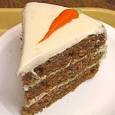
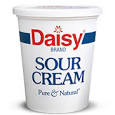
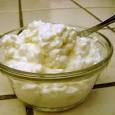

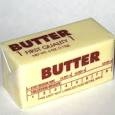
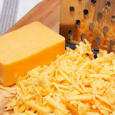
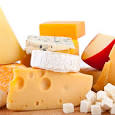


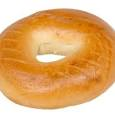
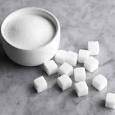
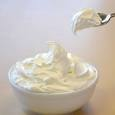
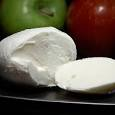
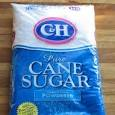
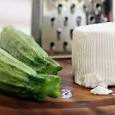
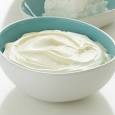
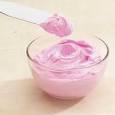










Add your comment